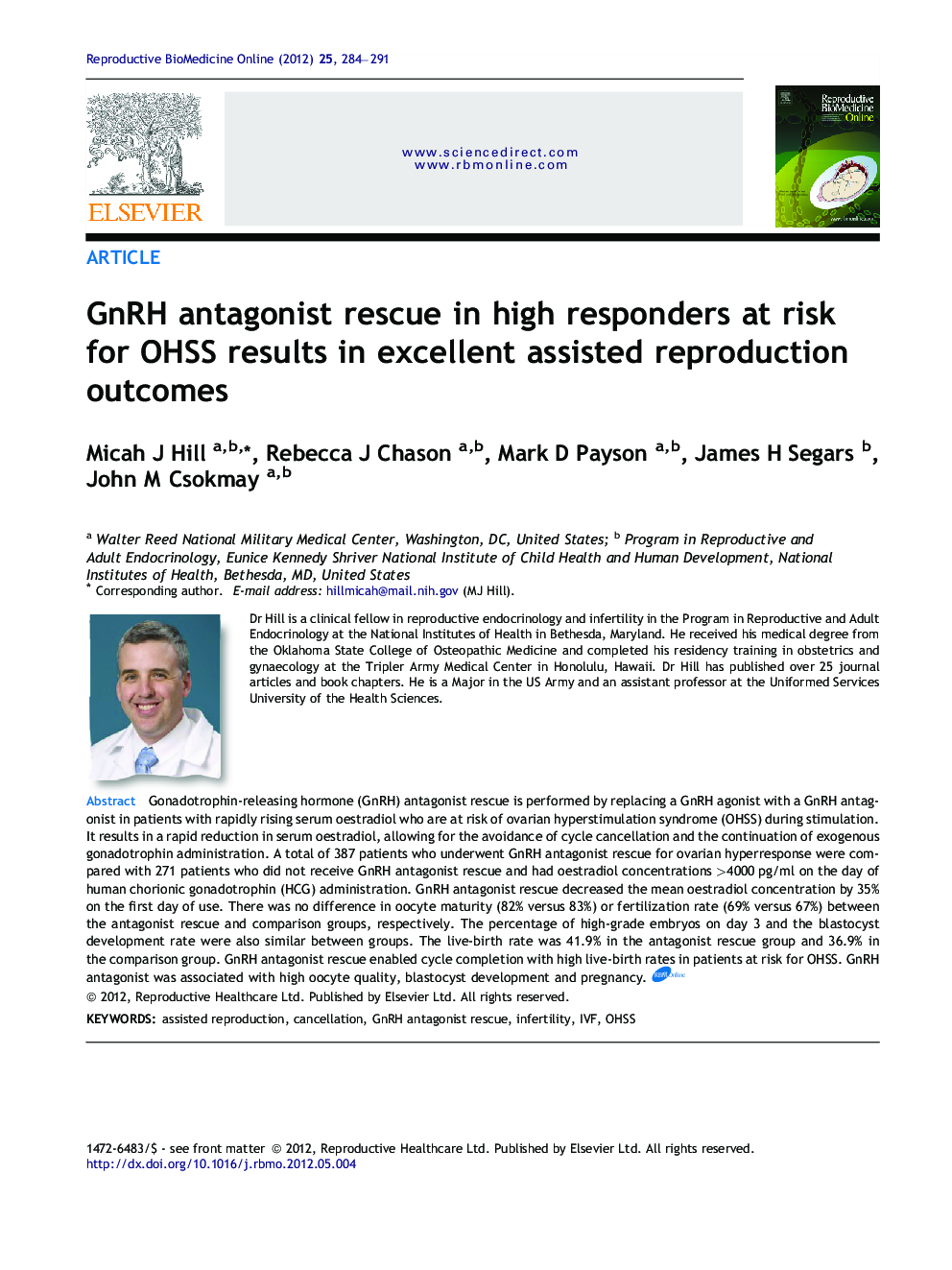| کد مقاله | کد نشریه | سال انتشار | مقاله انگلیسی | نسخه تمام متن |
|---|---|---|---|---|
| 3970643 | 1256736 | 2012 | 8 صفحه PDF | دانلود رایگان |

Gonadotrophin-releasing hormone (GnRH) antagonist rescue is performed by replacing a GnRH agonist with a GnRH antagonist in patients with rapidly rising serum oestradiol who are at risk of ovarian hyperstimulation syndrome (OHSS) during stimulation. It results in a rapid reduction in serum oestradiol, allowing for the avoidance of cycle cancellation and the continuation of exogenous gonadotrophin administration. A total of 387 patients who underwent GnRH antagonist rescue for ovarian hyperresponse were compared with 271 patients who did not receive GnRH antagonist rescue and had oestradiol concentrations >4000 pg/ml on the day of human chorionic gonadotrophin (HCG) administration. GnRH antagonist rescue decreased the mean oestradiol concentration by 35% on the first day of use. There was no difference in oocyte maturity (82% versus 83%) or fertilization rate (69% versus 67%) between the antagonist rescue and comparison groups, respectively. The percentage of high-grade embryos on day 3 and the blastocyst development rate were also similar between groups. The live-birth rate was 41.9% in the antagonist rescue group and 36.9% in the comparison group. GnRH antagonist rescue enabled cycle completion with high live-birth rates in patients at risk for OHSS. GnRH antagonist was associated with high oocyte quality, blastocyst development and pregnancy.Gonadotrophin-releasing hormone (GnRH) antagonist rescue is a protocol to reduce the risk of ovarian hyperstimulation syndrome (OHSS) in assisted reproduction treatment. Patients who have a hyperresponse to medication during their treatment cycle have their GnRH agonist discontinued and a GnRH antagonist started in its place. This causes a rapid reduction in oestrogen concentrations and allows for the continuation of stimulation medication. We evaluated the effectiveness of this protocol by comparing patients who had GnRH antagonist rescue against high-responding patients who did not receive GnRH antagonist rescue. GnRH antagonist rescue resulted in a 35% reduction in oestrogen concentration and only a 1.5% cycle cancellation rate. There were no differences in oocyte maturity or fertilization between the two groups. There were no differences in the quality of day-3 and day-5 embryos between the two groups. The live birth rate was 41.9% in the antagonist rescue group and 36.9% in the comparison group. GnRH antagonist rescue reduced serum oestradiol concentrations and enabled cycle completion with high live-birth rates in patients at risk for OHSS. GnRH antagonist was associated with high oocyte quality, blastocyst development and pregnancy.
Journal: Reproductive BioMedicine Online - Volume 25, Issue 3, September 2012, Pages 284–291